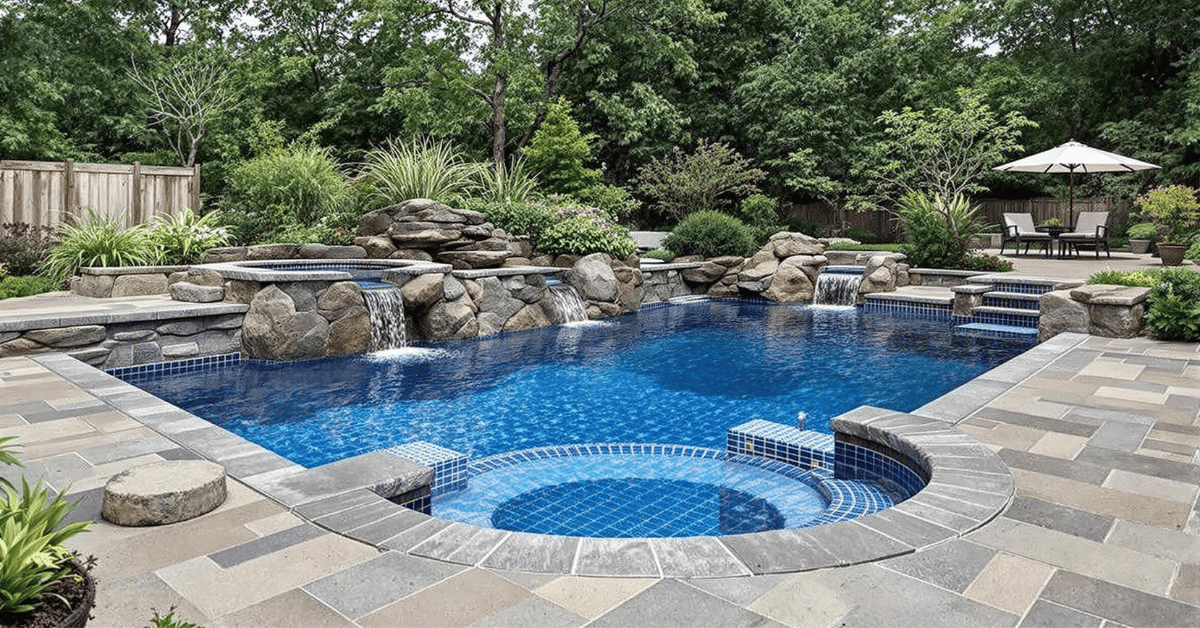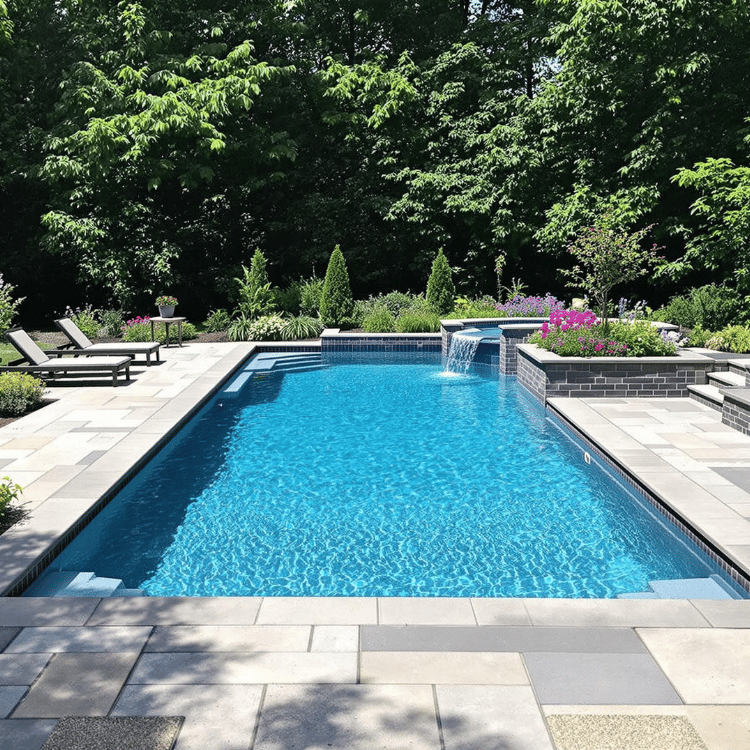Swimming pools are an investment—not just in real estate, but in time, maintenance, and cost. When a pool starts losing water, many owners either ignore the signs or assume evaporation is the culprit. In some cases, it might be. But when water loss becomes consistent, frequent topping-off is necessary, or water bills spike, you’re likely facing something more serious. That’s where pool leak detection and repair comes into play.
Whether the leak stems from plumbing, the shell, fittings, or other components, identifying and repairing the issue efficiently matters. At Gold Coast Swimming Pools, we understand the urgency and precision required when it comes to preserving both your pool and your property. With a full suite of maintenance, repair, and renovation services, we’re ready to help.
Why Water Loss Shouldn’t Be Overlooked
Ignoring persistent water loss can lead to several cascading problems. Beyond the obvious inconvenience and expense of refilling your pool, leaks can result in structural damage, erosion around the pool area, increased chemical use, and even compromised safety if the surrounding ground weakens.
Before assuming it’s a minor issue, assess the signs:
- Water level drops more than 1/4 inch daily
- Wet spots or mushy ground near the pool
- Air bubbles in return lines
- Cracks in the pool shell
- Unexplained algae growth due to chemical imbalance
Every drop matters. Once you confirm it’s not normal evaporation, the next step is targeted detection and professional repair.
Methods of Pool Leak Detection and Repair
When it comes to pool leak detection and repair, accuracy and speed are key. Technicians use a mix of tried-and-true methods and advanced tools to locate even the smallest leaks, both above and below ground.
Initial Inspection and Pressure Testing
Before diving into advanced diagnostics, an expert will first conduct a comprehensive inspection. This typically includes:
- Visual inspection for cracks, separations, or aging seals
- Dye tests around fittings, drains, and skimmers
- Pressure testing of plumbing lines
Pressure testing helps identify leaks in the underground plumbing system. If one line loses pressure, the leak is located along that line.
Electronic Leak Detection Tools
For pinpoint accuracy, electronic listening devices detect leak sounds within plumbing or structural cracks. In vinyl liner pools, technicians may use special probes that amplify the electrical current that leaks out with water. These methods are non-invasive and highly effective.
Once the source is identified, the repair strategy is based on location, material, and accessibility.
Common Areas Where Pool Leaks Occur
Not all pool leaks are created equal. Here are the most common sources where issues arise:
Skimmers and Return Lines
Skimmer leaks often occur due to separation between the plastic skimmer and the concrete shell. Return lines, on the other hand, are vulnerable underground and may develop leaks over time due to shifting soil or root intrusion.
Main Drains and Pool Floor
Main drain leaks are more challenging due to their position at the bottom. These often require divers to inspect and repair using underwater epoxy or full drain replacement.
Cracks in Shell or Liner
Concrete pools may develop hairline cracks that widen with seasonal freeze-thaw cycles. Vinyl liners are prone to punctures or seam separation. In either case, a professional patch, or in severe cases, resurfacing or relining, may be necessary.
Equipment Pads
Leaks may also originate near pumps, filters, chlorinators, or heaters. Loose fittings or aging components should be addressed promptly to avoid equipment damage.
Pool Leak Repair Options by Material
Every pool material comes with its own repair approach. Knowing how the repair varies helps owners understand costs and timeframes.
Concrete and Gunite Pools
- Epoxy injections for minor cracks
- Staple or staple-and-seal systems for structural repairs
- Replastering when damage is widespread
Vinyl Pools
- Underwater patch kits for small tears
- Liner replacement if deterioration is extensive
- Gasket or faceplate resealing for fittings
Fiberglass Pools
- Resin-based patching
- Gelcoat touch-ups
- Structural foam fill for deeper issues
For each type, precision and the right materials ensure longevity.
How to Prevent Leaks After Repair
Once repaired, a proactive maintenance routine goes a long way. Keep in mind:
- Schedule regular inspections—ideally, at the beginning and end of the season.
- Monitor water level weekly.
- Keep chemicals balanced to avoid liner degradation.
- Winterize properly to prevent freeze damage.
- Avoid overloading edges or coping stones.
Preventative care isn’t just about avoiding damage—it also protects your warranty and improves the lifespan of your pool.
Why Timely Action Matters in Pool Leak Detection and Repair
Waiting too long often multiplies repair costs. Leaks tend to worsen over time, often infiltrating surrounding structures, mechanical systems, and even adjacent landscaping. In some cases, undetected leaks can lead to full shell or deck failures, costing tens of thousands to fix.
For property owners, time is money. Immediate assessment followed by targeted repair minimizes downtime and prevents collateral damage.
That’s why clients throughout Long Island rely on Gold Coast Swimming Pools. We don’t just stop the leak—we make sure it doesn’t come back.
Working With a Trusted Provider: Why Gold Coast Swimming Pools
Hiring a provider with experience, industry credentials, and modern tools is critical. At Gold Coast Swimming Pools, we deliver:
- Prompt on-site inspections
- Transparent estimates with detailed diagnostics
- Non-invasive detection methods
- Long-lasting repair solutions
- Ongoing service plans tailored to your pool type
You can request a quote, schedule a visit, or contact us for an urgent service need by calling (516) 759-3000. Your pool deserves precise care—don’t settle for guesswork.
Frequently Asked Questions
How do I know if my pool leak is in the plumbing or the structure?
Pressure testing and dye testing typically reveal whether a leak is in the plumbing or the shell. Technicians will isolate the plumbing lines and observe pressure loss.
Is it possible to repair a pool leak without draining the pool?
In many cases, yes. Underwater epoxy, vinyl patching, and even drain repairs can often be done by certified divers without draining.
What’s the average cost of pool leak detection?
Depending on the complexity and equipment required, initial detection typically ranges between $300 to $800. Repairs vary depending on the issue found.
Can DIY kits fix small leaks?
They can, temporarily. However, without identifying the root cause, DIY fixes tend to be short-term. Professional assessment is always recommended.
How long does leak repair usually take?
Basic repairs can be completed same-day, while more extensive fixes (like pipe replacement or structural work) may take several days.
Does insurance cover pool leak repairs?
This depends on your policy. Damage caused by the leak might be covered, but repairs to the pool itself usually are not. Check with your insurer for details.
Time to Plug That Drain: Don’t Let Leaks Drain Your Budget
Effective pool leak detection and repair isn’t just about stopping water loss—it’s about restoring confidence in your backyard investment. From small vinyl liner tears to hidden underground plumbing leaks, Gold Coast Swimming Pools is equipped to handle it all.
Contact us today to protect your pool, your yard, and your peace of mind. Schedule your inspection through our contact form or call us directly at (516) 759-3000. We’re here to solve the issue before it grows into a costly headache.


